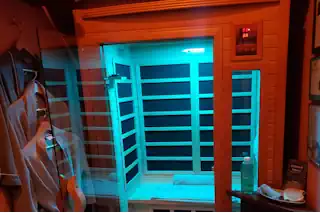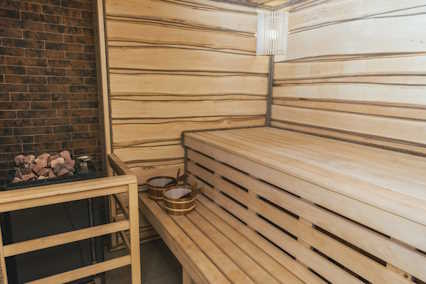Unlocking Wellness at Home: The Allure of In-Home Saunas
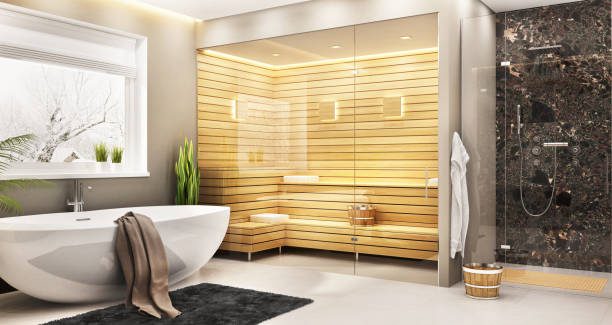
In the pursuit of well-being, more individuals are turning their homes into sanctuaries of health and relaxation. The growing spectrum of in-home wellness experiences now extends to in-home saunas, offering an alluring blend of luxury, rejuvenation, and health benefits within the comfort of your own space. This comprehensive guide dives deep into how you can establish your personal oasis with an in-home sauna and reap the rewards of this timeless practice.
Basking in the Benefits of In-Home Saunas
Harmony and Healing Right at Your Doorstep
The practice of sauna bathing has a storied history rooted in cultures worldwide, celebrated for its ability to cleanse the body and soothe the mind. In-home saunas serve as a bridge between tradition and contemporary living, providing users with a myriad of benefits without having to leave their abode.
The Physical Perks
Detoxification and Circulation
Sweating it out in a sauna is known to assist in the elimination of toxins and promote a robust circulatory system. Increased perspiration helps the body rid itself of impurities, fostering clearer skin and a sense of lightness.
Skin Health and Healing
The heat and humidity within saunas encourage the opening of pores, allowing for a deeper cleanse. This deep purification can contribute to a healthier, more radiant complexion over time.
Mental Marvels
Stress Relief and Relaxation
A sojourn in a sauna offers a tranquil escape from the bustle of daily life, with the potential to reduce stress and tension. The heat induces a release of endorphins, nature’s feel-good chemicals, providing a natural mood lift.
Slumber Sweetening
Regular sauna use can promote restful, revitalizing sleep. The body’s temperature flux in a sauna mimics the pre-sleep drop, signaling to the brain that it’s time to wind down, making it an excellent pre-bedtime ritual for an improved sleep schedule.
The Privacy and Prominence of Convenience
Having a sauna at home provides the ultimate luxury of instant access to relaxation. Skip the step of traveling to a spa and enjoy the sauna experience in privacy, crafted to your schedule and your needs.
Choosing Your Indoor Sauna Adventure
Indoor Sauna Options to Consider
- Pre-Cut Sauna Kits: Ideal for those who have a designated space and seek a customized sauna experience. These kits come with all the necessary components, requiring you to install them in your pre-existing room.
- Modular Sauna Units: Perfect for individuals looking for flexibility and ease of installation. These standalone units can be easily assembled and disassembled, allowing you to relocate them as needed.
- Infrared Saunas: A modern twist on traditional saunas, using infrared panels to heat the body directly. These are known for their energy efficiency and deeper tissue penetration, offering a unique set of health benefits.
- Portable Saunas: For those with limited space or who enjoy the convenience of mobility, portable saunas offer a simple, foldable solution that can be set up wherever there’s enough room.
- Steam Rooms: Though slightly different from dry saunas, steam rooms provide a high-humidity alternative, enveloping users in a cloud of warm steam, ideal for respiratory benefits and hydration.
Fitting a Sauna to Your Space and Style
- Assess Your Available Space: Before choosing your sauna, measure the space you have available. This will not only determine the size of the sauna you can accommodate but also impact the type of sauna you choose, whether it’s a pre-cut kit for a larger area or a portable sauna for tighter spaces.
- Define Your Style: Consider the aesthetic of your home. Do you prefer a modern look, or is your space more traditionally styled? There are sauna designs to match every decor, from sleek, contemporary infrared saunas to classic wood-finished options.
- Consider the Energy Source: Different saunas use different energy sources, including electricity, wood, and gas. Think about what’s most convenient and efficient for your home, and factor in the ongoing costs.
- Identify Your Preferred Sauna Experience: Are you looking for the intense heat of a traditional Finnish sauna, or do you prefer the gentler warmth of an infrared sauna? Your personal comfort and health goals should guide your choice.
- Plan for Ventilation: Proper ventilation is crucial for any sauna, ensuring both comfort and safety. Make sure your chosen location can accommodate ventilation needs, whether it’s through natural means or mechanical systems.
- Accessibility and Ergonomics: Consider how you will enter and exit your sauna. Ergonomic seating and accessible doors can enhance comfort and convenience, making your sauna experience more enjoyable.
- Budget Accordingly: Saunas can range from relatively affordable to quite luxurious. Set a realistic budget that accounts for the purchase, installation, and any future maintenance costs to ensure your sauna project is financially comfortable for you.
Selecting the right sauna for your home is a crucial step in establishing your wellness nook. Whether you fancy the traditional dry heat of a Finnish sauna, the smoky aroma of a wood burning sauna, or the gentle, temperature-specific warmth of an infrared sauna, there are diverse options to accommodate your preferences and space constraints.
Traditional Sauna vs. Infrared Sauna
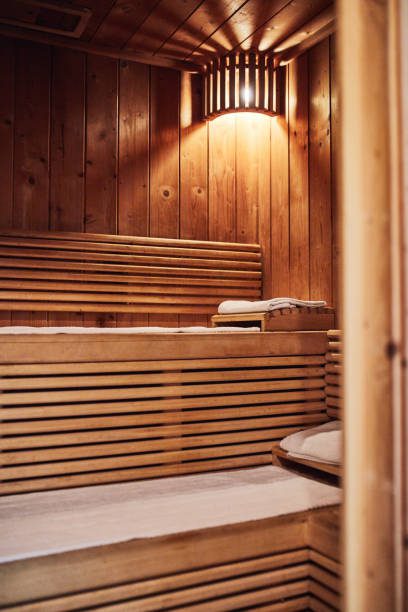
Traditional Saunas are often heated with rocks to produce a dry heat, accompanied by occasional ladles of water to raise the humidity. This style is nostalgic and social, often allowing for multiple occupants.
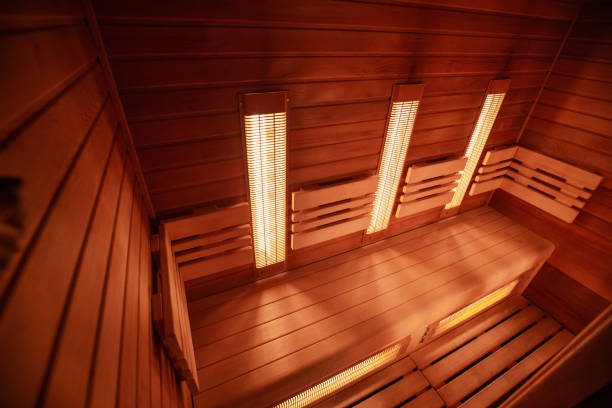
Infrared Saunas are favored for their ability to directly warm the body, rather than the space around it. They operate at lower temperatures than traditional saunas, making them an inviting option for those who may not tolerate extreme heat well or have respiratory issues.
Sizing Up and Setting Up
When considering the installation of an in-home sauna, it’s vital to ensure that the sauna’s size fits your available space. From compact models to larger, more permanent fixtures, there are options to accommodate various room sizes and shapes. DIY enthusiasts may find portable saunas an accessible and customizable choice for their hydro-thermal venture.
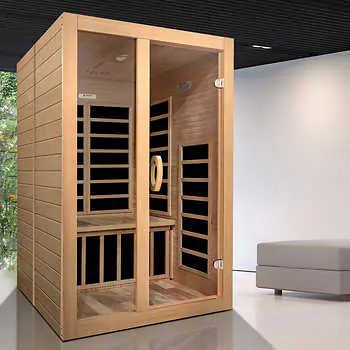
Placement Perfection
Selecting the right location ensures that your sauna complements the overall aesthetic of your home while being easily accessible and properly integrated for optimal function and safety.
Steam Sauna vs. Infrared Sauna: What’s the Difference?
Understanding the Distinctive Experiences Between Steam and Infrared Saunas
When choosing the perfect sauna for your home, it’s essential to comprehend the fundamental differences between steam saunas and infrared saunas, as each offers unique benefits and experiences.
Steam Saunas generate their heat through a steam generator or by pouring water over hot stones, increasing humidity within the space. This elevated moisture level creates a warm, enveloping environment that can aid in deep respiratory relief and is known for its traditional, intense heat experience.
Infrared Saunas, on the other hand, use infrared heaters to emit a specific wavelength of light that directly warms the body rather than heating the air around you. This results in a more gentle, penetrating heat that allows for longer sessions and potentially offers deeper tissue benefits, making it a preferred choice for those seeking therapeutic effects or who are sensitive to the high temperatures of traditional steam saunas.
Each type caters to a different preference in sauna experience, with steam saunas offering a classic, intense heat and humidity session, while infrared saunas provide a milder, more focused heat therapy. Understanding these differences equips you with the knowledge to select the type that best aligns with your wellness goals and personal comfort preferences.
Indoor vs. Outdoor Saunas: Choosing What’s Best for You
When deliberating between an indoor or outdoor sauna, several factors come into play that could influence your decision. Here’s how they compare:
Indoor Saunas are typically integrated into the home’s interior, such as in bathrooms or basements. The main advantage of an indoor home sauna is convenience, offering accessibility and use in any weather condition.
They are sheltered from the elements, which can make them easier to maintain and potentially extend their lifespan. However, space limitations and the need for proper ventilation are significant considerations.
Outdoor Saunas, on the other hand, provide a more immersive experience. Positioned in backyards or garden areas, they can blend with the natural surroundings to offer a tranquil escape. Outdoor saunas are ideal for those who have the space and prefer a separate wellness retreat.
While they offer a more authentic experience and possibly greater size options, they require additional maintenance to protect against weather and environmental conditions.
Ultimately, the choice between an indoor and outdoor home sauna depends on your personal preferences, available space, and lifestyle needs. Each offers unique benefits, from the convenience and accessibility of an indoor home sauna to the nature-connected and spacious experience of an outdoor home sauna.
Building Your At-Home Sauna
DIY and Delight: Crafting Your Relaxation Space
Those with a penchant for building and personalization can incorporate a sauna as part of a larger home improvement project. Creating a bespoke in-home sauna can be a gratifying experience, promising a unique addition to your domestic landscape.
A matter of Material
Home Sauna Kits
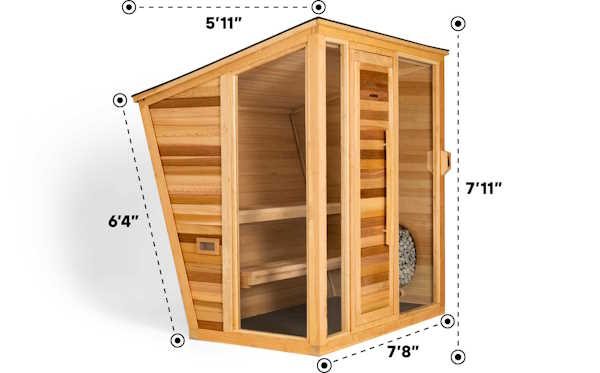
Opting for a home sauna kit is a hassle-free way to bring a sauna into your living space. Kits are available for both traditional and infrared saunas, offering pre-fabricated elements that can be assembled with relative ease.
Crafting from Scratch
For the truly adventurous, building a sauna from the ground up presents the opportunity to tailor every detail to your liking. From selecting the right wood for walls and benches to choosing the lighting and interior decor, a DIY sauna project is the epitome of personalization.
Safety First, DIY Second
Entwined with the pleasure of crafting a sauna is the responsibility of ensuring that it is safe to use. Familiarize yourself with the necessary safety precautions and building codes. Remember, the goal of a home sauna is to relax, so safety should be the shoulders on which any DIY effort stands.
Sauna Sessions: Making It a Part of Your Routine
Integrating the Sauna Session into Your Lifestyle
Achieving consistent use of your home sauna is key to reaping its rewards. Developing a regular sauna routine and combining it with additional wellness practices can elevate the experience to new heights.
Timing and Temperature
Establishing a Sauna Schedule
Whether you sauna in the morning to prepare for the day or at night to unwind, consistency is paramount. Start with shorter sessions and gradually increase the duration to acclimate your body to the heat.
The Heat Is On
Understanding and adjusting the sauna temperature to your comfort is crucial. Begin with lower temperatures and ascend slowly as you become more accustomed to the heat. Relax, breathe, and allow the sauna to work its magic at a pace that suits you.
Enhancing the Experience
Aromatherapy and Saunas
Incorporate the healing power of scents into your sauna experience with the use of essential oils. Choose fragrances like eucalyptus for a refreshing kick or lavender for an added sense of calm.
Meditative Musings
Combine sauna sessions with meditation for a deeply tranquil experience. Use the solitude and stillness of the sauna to center your thoughts and practice mindfulness.
Synergizing Wellness with Saunas
The Holistic Approach to Home Saunas
Home saunas are not just about physical and mental health; they represent a component of a broader lifestyle centered on wellness. By integrating this ancient practice into your home, you’re fostering a lifestyle that prioritizes self-care and rejuvenation.
The Bigger Picture
Sauna bathing can complement other wellness activities, such as regular exercise and a balanced diet. It is part of a larger puzzle that, when pieced together, paints a picture of sustained well-being.
Testimonials and Tales of Transformation
Nothing speaks to the power of an at-home sauna quite like the stories of those who have integrated it into their lives. Real-life accounts can serve as inspiration, offering a glimpse into the potential of saunas to transform one’s well-being at home.
Seal in the Steam: Final Thoughts on In-Home Saunas
A Gateway to a Healthier, Happier Home
The allure of in-home saunas lies in their ability to transform a familiar space into a therapeutic environment that encourages relaxation, detoxification, and improved health. By taking the plunge and investing in an in-home sauna, you’re unlocking the potential for a lifestyle centered on wellness—with the sauna being the warm heart of it all.
Frequently Asked Questions (FAQs)
What Are the Key Differences Between Traditional and Infrared Saunas?
Traditional saunas use a heater and stones to warm the air, which then heats your body. This method creates a hot and humid environment. Infrared saunas, on the other hand, use infrared panels to directly warm your body without significantly heating the surroundings, creating a more comfortable experience for those sensitive to heat.
Can Saunas Help with Weight Loss?
While saunas can lead to temporary water weight loss due to sweating, they should not be relied upon for substantial weight loss. However, saunas can complement a healthy lifestyle that includes proper diet and exercise by promoting relaxation and recovery.
How Often Should I Use My Sauna?
Frequency can vary depending on personal preference and tolerance to heat. Starting with shorter sessions (15-20 minutes) about 2-3 times a week is recommended, gradually increasing as your body adapts. Consistency and listening to your body’s signals are key.
Are There Any Health Risks Associated with Sauna Use?
For most people, sauna use is safe and beneficial. However, individuals with certain conditions (e.g., heart disease, low blood pressure, pregnant women) should consult a physician before starting a sauna routine. It’s also important to stay hydrated and avoid alcohol before sauna sessions.
What Maintenance Is Required for an In-Home Sauna?
Maintenance largely depends on the type of sauna. Traditional saunas may require more cleaning due to moisture build-up. Generally, keeping the interior surfaces clean, ensuring proper ventilation, and occasionally treating wood surfaces can help maintain a hygienic and fresh environment.
Can I Install a Sauna By Myself?
Yes, especially if opting for a home sauna kit designed for easy assembly. However, constructing a sauna from scratch involves more complex considerations like insulation, ventilation, and electrical wiring, requiring a higher level of DIY skills or professional assistance.
How Can I Enhance My Sauna Experience?
Incorporating aromatherapy, meditation, or even gentle stretching can elevate your sauna experience. Experimenting with these additions can help you find what best complements your routine for relaxation and rejuvenation.



